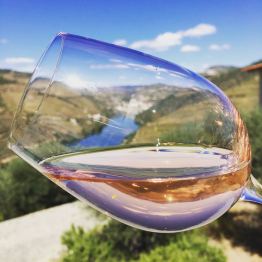Produced for popupwine.com.sg in November 2016.
And the Rosé was good.
The first use of the word Rosé to describe pink wine is unknown, however we do know that the first wines of this style appeared as early as 7000 BC. Dark, high tannin, Red wines did not appear for another 4500 years, and White wines even later.
Rosé’s precocious appearance is due to the simplicity of its production. Under the skin contact method, all that is required to achieve Rosé’s striking colour is a light press of freshly harvested red grapes. This can be done by hand, or feet, with no requirement for complicated machinery. Very little maceration is necessary.
While various techniques are now used for Rosé production, most have the same concept at their core: brief contact between grape juice and red grape skins. Winemakers can achieve different colours from Pink to Salmon to Orange by varying the length of this contact.
One exception is the Champagne region of France, the only wine producing area of the European Union where it is permissible to produce Rosé by blending Red and White wine. This is illegal elsewhere in the European Union.
France produces 27% of the planet’s Rosé with the vast bulk of this being produced in warm southern France: Provence, the Southern Rhone (particularly Tavel) and Languedoc-Roussillon being the most important.
Example: Georges Duboeuf Fleur De Rosé 2014 ~ Languedoc-Roussillon, France
Example: Lavau Côtes Du Rhône Rosé 2013 ~ France
The Cotes de Provence is to Rosé what Champagne is to Sparkling wine. 87% of wine made in Provence is Rosé, with most produced in a delightful fresh salmon-pink style which John Szabo describes as “dangerously drinkable”. Matthew Jukes accurately describes Provence as the “finest region in the world for this style of wine”.

Example: Mirabeau Côtes De Provence Rosé 2015 ~ Provence, France
Example: Aix Rosé “Domaine De La Grande Séouve” 2015 ~ Provence, France
The red-skinned Grenache grape dominates Rosé production in southern France. It is popular because of its relative lack of anthocyanins – plant colorants responsible for the red, purple, and blue hues evident in many fruits. Cinsault, Syrah (Shiraz) and other grapes are also used.
English wine writer Jancis Robinson believes Australia has a fondness for “swashbuckling” deep pink Rosés. These are hard to find in Singapore, but Pop Up Wine currently have a couple.
Example: Teusner Salsa Rosé 2014 ~ Barossa Valley, Australia
Across the Pacific, the Californians produce a hugely popular Rosé which some do not realise is a Rosé: White Zinfandel. “White Zin” is pink, and made from the red Zinfandel grape. It was originally a byproduct of a 1970s attempt to produce a high tannin red wine, by bleeding off some initial juice. It now accounts for 10% of all wine sold, by volume, in the United States and outsells conventional Zinfandel by 6 to 1.
Orange wines – sometimes referred to as Onion wines – are also, technically, Rosé wines. Their name is a reference to the colour of an onion, unpeeled.
J., 1/11/16
